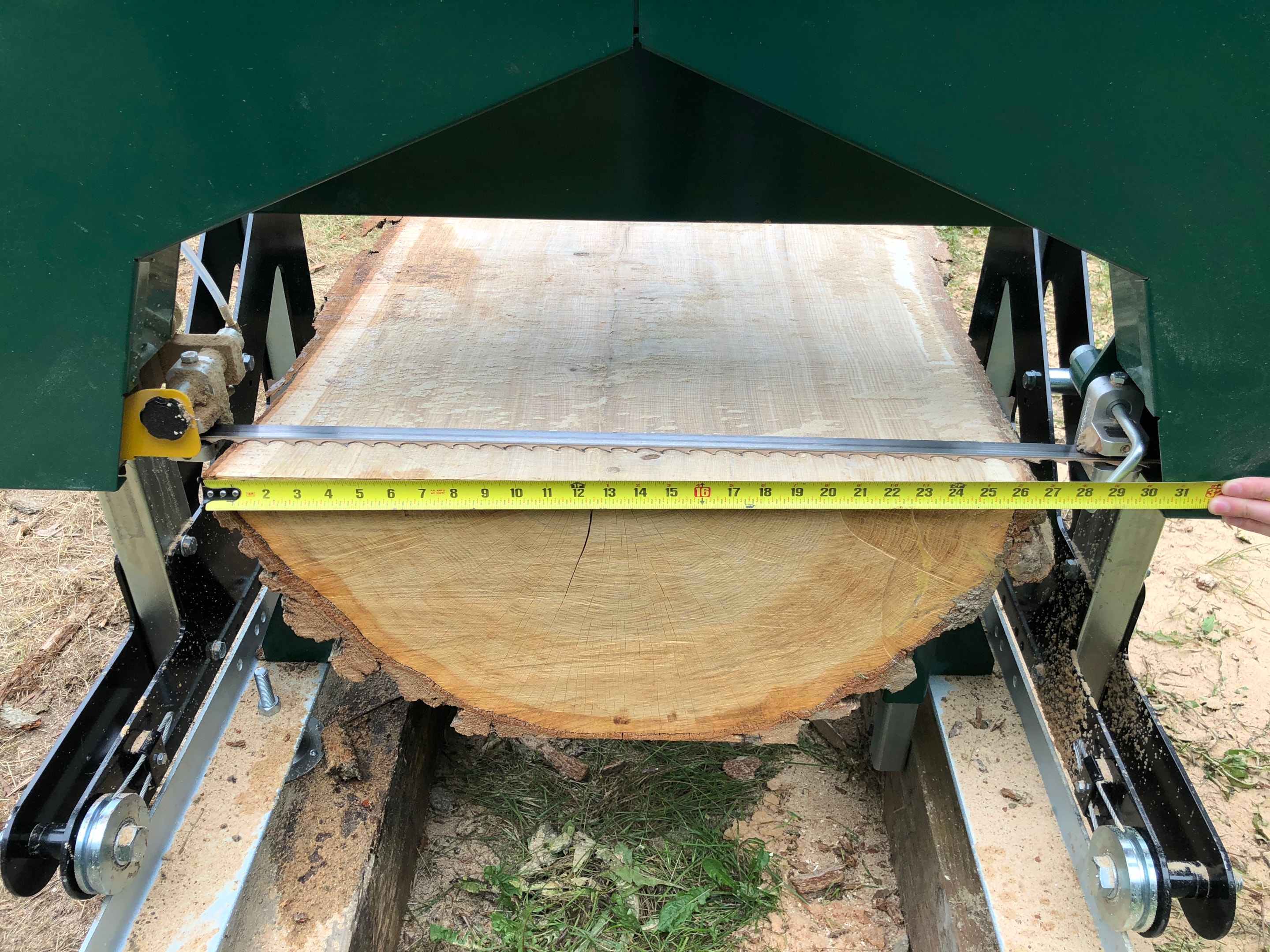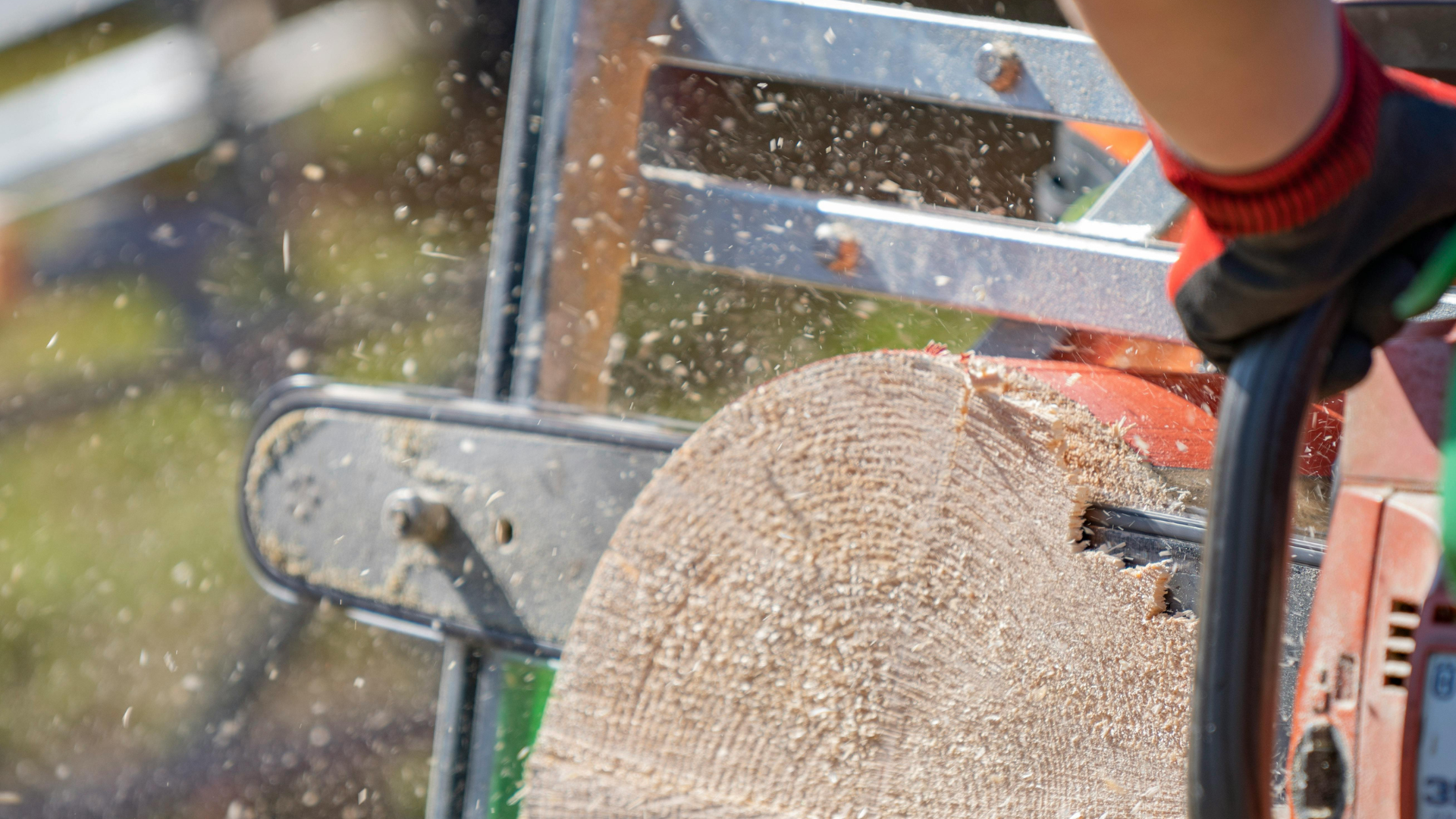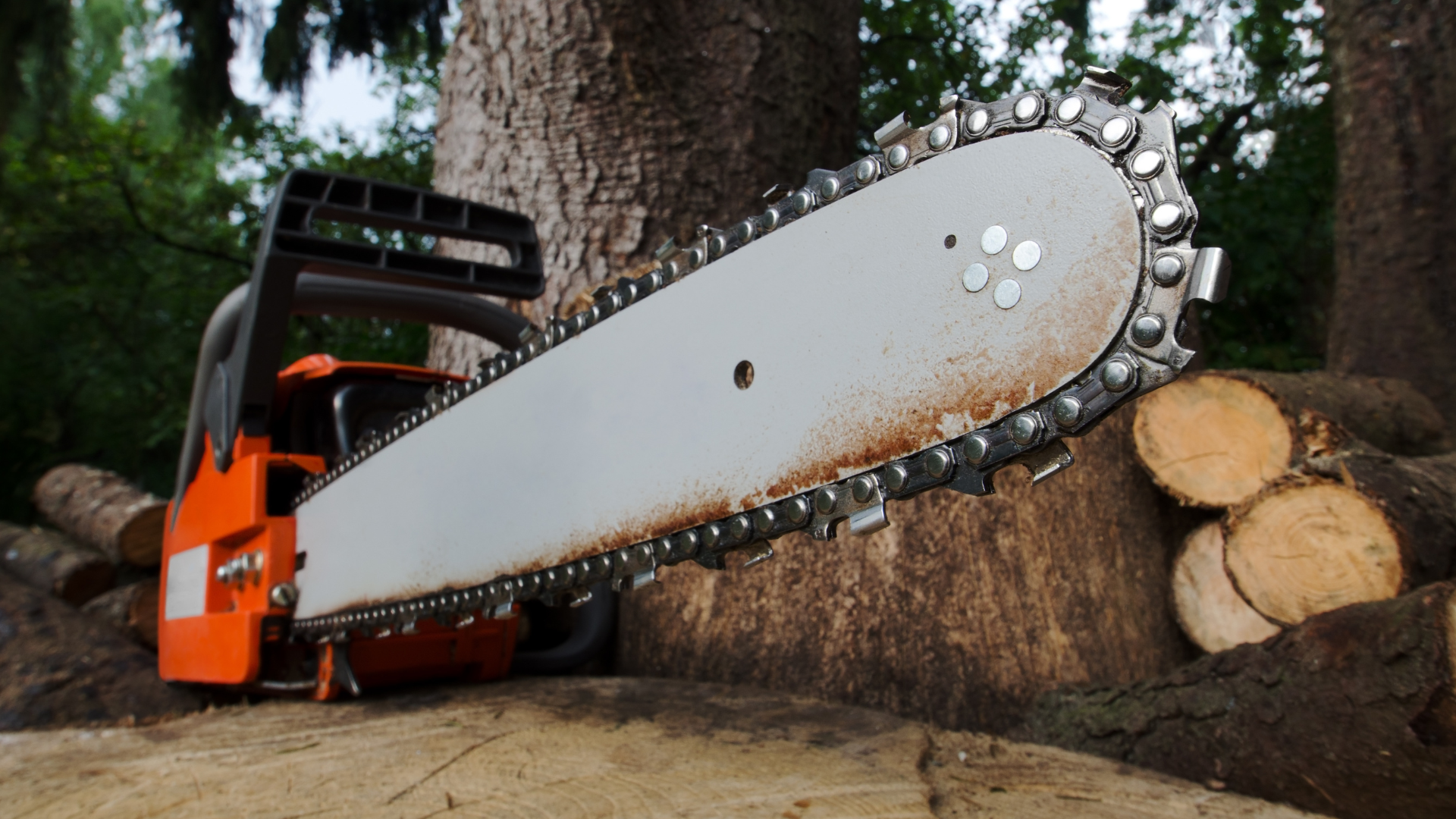Sawmill vs Chainsaw: Which is best for your woodcutting needs?
When milling logs into usable lumber, you've got a few choices.
Bandsaw mills and chainsaw mills are two very popular options for sawyers. Your choice between these two options can significantly impact everything from your investment of time to final lumber yield.
Either tool can be a great way to mill your own lumber, whether you're rough cutting dimensional lumber for a shed or need hardwood lumber for flooring, but which one is better for sawing wood you'll need for your next project?
Some sawyers start with one method before moving to the other.
"Been using a chainsaw mill for the last couple of years and ready to up my game," says Thomas, who bought a Woodland Mills HM126 Portable Bandsaw Mill.
Whether you're processing larger logs for a commercial operation or cutting smaller logs for a hobby project, this comprehensive comparison will help you understand which option suits your specific needs.
Understanding the basics of sawmills and chainsaws
Let's go over the basics of what sets these two types of machines apart.

What is a bandsaw mill?
A bandsaw mill is designed to cut logs precisely and efficiently. They handle everything from smaller logs to huge logs, producing smooth surfaces with less sawdust than other methods. Band sawmills, sometimes shortened to just band mills, are often specifically designed to mill lumber, making them ideal tools for the job.
The main advantages of a bandsaw mill are superior motor power and consistent cutting quality across a variety of log sizes, as well as relying less on manual labor. Bandsaw mills are also customizable, allowing you to upgrade the size of your track to fit bigger logs.
There are lots of upsides to using a bandsaw mill for milling lumber:
-
-
Less labor intensive, letting the machine work for you
-
A very small amount of lumber waste due to the thin kerf blade
-
Can mill a wide variety of log sizes, depending on the size of your mill and the length of your track
-

What is a chainsaw mill?
A chainsaw mill, such as an Alaskan mill, transforms a chainsaw into a lumber-making tool. Using a rip chain and specialized chainsaw bar, these units can process large logs effectively.
The bar length determines the maximum width of boards you can cut, and a ripping chain ensures straight, clean cuts. Many sawyers will start with chainsaw milling because they often already own a chainsaw, making for little upfront cost.
The benefits of chainsaw milling include:
-
-
Low initial upfront investment
-
Portability due to its low weight and small size
-
Uses existing familiarity with a chainsaw
-
Far more labor intensive
-
Sawmill vs. chainsaw: the key differences
So what are the key reasons to opt for one milling technique over the other?
Speed and efficiency
Bandsaw mills outperform chainsaw mills in speed and efficiency. The motor power of such a sawmill can process lumber up to ten times faster than a chainsaw mill. That makes it the obvious choice for high-volume operations. The bandsaw mill's blade system ensures smooth, continuous cutting and decreases demands on the operator.
Chainsaw mills require a more methodical, labor-intensive approach. Operators need to take regular breaks for chain lubrication and cleaning, which significantly extends the cutting time. The physical demands of operating a chainsaw mill are considerable, and the higher sawdust production represents wasted material that could have been usable lumber.
Bandsaw mills can:
-
-
Cut logs up to ten times faster than chainsaw mills
-
Handle big stuff with consistent precision
-
Have superior motor power for continuous operation
-
For chainsaw mills:
-
-
Bar length determines cutting capacity
-
Shorter bar length means milling smaller logs
-
Goes as fast as the operator can manually mill
-
Material yield and cut quality
The difference in material yield between these two systems is substantial. Bandsaw mills excel by producing less sawdust and maximizing lumber recovery from each log. Chainsaw mills remove significantly more material with their wider kerf, resulting in more waste per cut.
Bandsaw mills:
-
-
Process larger logs with minimal waste
-
Less sawdust than chain mills
-
Produce precise, clean cuts every time
-
For chainsaw mills, cut quality will depend on whether you're coordinating your cuts by hand or using a frame-mounted chainsaw. The benefits of the frame-mounted mills include:
-
-
More stable platform for milling logs
-
More challenging for quartersawing
-
Greater manual control over your cuts
-
Log size capabilities
Bandsaw mills offer impressive versatility in log diameter. Their consistent performance across everything from smaller logs to huge logs makes them ideal for regular lumber production. Chainsaw mills are valuable for specialty cuts and quartering oversized logs that exceed a band sawmill's capacity.
Bandsaw mills capacity is determined by by:
-
-
The width of the sawhead, determining the overall diameter of logs which can be milled
-
The length of the track, determining the length of logs able to be milled
-
Track length can be added onto over time with track extensions
-
For chainsaw mills:
-
-
You can mill any length of log, but the longer the log the more effort required
-
Bar length is the biggest factor determining what diameter of logs you're able to cut
-

Sawmill or chainsaw?
There are lots of benefits to both techniques of sawmilling. Lots of sawyers start with chainsaw milling and then end up getting portable bandsaw mills for a reason. Let's go over why each milling method has its merits.
When to choose a bandsaw sawmill:
You would want to pick a portable bandsaw mill for the following reasons:
For high volume lumber production
-
-
Efficiently handles larger logs
-
Less sawdust production
-
Ideal for kiln dried lumber production
-
Superior motor power for sustained cutting
-
Minimal downtime between cuts
-
For creating custom lumber sizes
-
-
Accurate cuts through larger logs
-
Consistent results from smaller logs
-
Less sawdust means more usable lumber
-
Perfect for specialty cuts
-
Better yield from each log
-
For processing logs at home
-
-
Permanent setup options
-
Clean cuts with minimal waste
-
Ideal for various log sizes
-
More ergonomic operation
-
Cleaner work environment
-
When to choose a chainsaw mill:
A chainsaw mill might make more sense for the following reasons:
For felling and trimming trees
-
-
Immediate use after tree removal
-
Adjustable rip chain for different cuts
-
Flexible chainsaw bar options
-
Flexible cutting options
-
For occasional woodcutting jobs
-
-
Lower initial investment
-
Easy storage when not in use
-
Perfect for occasional projects
-
For portability and remote locations
-
-
Easily transportable
-
Minimal setup required
-
Access difficult locations
-

Making the choice: which tool is right for you?
At the end of the day, which machine makes the most sense for your milling projects?
Consider your cutting needs
Bandsaw mills are invaluable for anyone planning regular lumber production. Their efficient material yield and impressive production speed make them ideal for woodworking operations where precise cuts are crucial. Investing in a band sawmill becomes particularly worthwhile when you need to maximize the value of each log.
Chainsaw mills, on the other hand, excel in situations that require portability. If your work frequently takes you to remote locations or you process logs on an occasional basis, a chainsaw mill offers convenience.
Available space and logs
Space considerations play a crucial role in your choice. Bandsaw mills are portable, but you'll either need a dedicated work area with a level operating surface or a place to store it when not in operation.
You'll need to consider the footprint of the mill itself, as well as space for moving logs onto the mill and storing finished lumber. This setup, while it requires more space, creates an efficient workflow for regular production.
Chainsaw mills offer more flexibility in terms of space requirements. Without the need for a permanent setup, they suit operators with limited space. Chainsaw mills can easily be stored when not in use, making them perfect for occasional users.
Budget considerations
When you evaluate the financial aspects of your decision, think about more than just the initial purchase price. Band sawmills may require a larger upfront investment, but their efficiency in leads to faster recovery of costs. Be sure to factor in the value of your time, the volume of lumber you plan to produce, and the potential for material savings.
For chainsaw mills, the lower initial cost makes them an attractive option for anyone starting out or working with a limited budget. However, the increased labor costs, higher material waste, and potentially lower production capacity all factor into the total cost of ownership. The ideal choice comes from a careful analysis of your specific situation, including production needs, available space, budget constraints, and long-term goals.
Many sawyers will experiment with chainsaw mills and learn about the difficulties associated with them before buying a bandsaw mill.
Frequently Asked Questions
Why would anyone want a sawmill?
A bandsaw mill offers significant advantages for milling logs efficiently, including faster cutting speeds, better yield, and more precise dimensional lumber. It's an investment that pays for itself quickly through material savings and increased productivity.
What is the difference between a chainsaw and a band saw?
A chainsaw is primarily designed for cutting through trees and logs. It features a rotating chain with sharp teeth that move around a guide bar, making it suitable for fast, aggressive cutting rather than precision work. Chainsaws are typically powered by gasoline or electricity, either corded or battery-operated.
A band sawmill uses a narrow, toothed blade running over wheels to slice through logs. Band sawmills are faster and more efficient, with a thinner kerf that reduces waste and produces smoother cuts when milling logs. They also provide greater precision and consistency, making them ideal for larger-scale operations or producing high-quality lumber.
Can you mill lumber with a chainsaw?
Yes, with proper attachments like an Alaska mill, you can mill lumber with a chainsaw. While these attachments generate more sawdust than a bandsaw mill, they're effective for occasional use or remote locations.
Is owning a portable sawmill worth it?
For anyone who regularly mills logs into lumber, a portable sawmill is definitely worth the investment. Portable bandsaw mills offer increased efficiency and faster production, while their precise cutting ability maximizes material yield. They're a labor-saving solution with long-term benefits for woodworkers and property owners.
SHOP SAWMILLS
HM122
The HM122 portable sawmill, packaged with the rugged Bushlander® trailer for complete mobility, loaded with features like the RapidChange® blade system, auto lube and more.
HM126
The sawyer favourite HM126 portable sawmill, packaged with the Woodlander® trailer for complete mobility, ideal operation height and easy storage.
HM130MAX®
The wide capacity HM130MAX® portable sawmill, packaged with the Woodlander® trailer for complete mobility, comfortable operation height and easy storage.
HM136MAX™
Our widest-capacity portable sawmill, the HM136MAX™, packaged with the Woodlander® trailer to make it easy to take anywhere and easy to store.
Join the Woodland Mills Community Facebook group. Search advice and insights from over 65,000 knowledgeable, supportive members.
- Pre-purchase considerations
- Sawmill set-up support
- Project inspiration photos and videos
- Community troubleshooting support
